- Home
- Patricia Cornwell
Spin (Captain Chase) Page 9
Spin (Captain Chase) Read online
Page 9
But it would seem I’m reasonably calm and collected considering the circumstances as I put on my PEEPS over my SPIES before venturing into the great unknown. I’m headed to the door when ART alerts me through my earpiece that I have an incoming call.
00:00:00:00:0
“O-C-M-E,” he says, and I’m as sweet as sugar when I ask him which Office of the Chief Medical Examiner he means.
Statewide there are 4 district facilities, I remind ART. Including the headquarters in Richmond, and he informs me just as nicely that death investigator Joan Williams from the local office in Norfolk is trying to reach me from her mobile phone.
“Thank you, and I’ll take the call.” I’m overly polite, laying on the southern charm as I haul my belongings out of suite 604.
“You’re welcome, putting her through now,” ART mimics the very cadence and pitch of my speech, connecting me.
“Calli?” angrily in my earpiece. “Where are you?” Joan stops me in my tracks before I’ve so much as uttered hello.
“I’m sorry . . . ?” I have no idea what she’s talking about as I stand like a statue on the second-floor landing, going nowhere.
“You promised to be here!” and she sounds just as hurt as she’s aggravated.
I almost reply that I haven’t promised any such thing. It’s on the tip of my tongue to tell Joan and we’ve had no contact since working Vera Young’s crime scene earlier in the week. But I stop short of communicating in any form or fashion that I don’t know what’s going on.
“Well thanks a lot because the rich beeyotch is in our lobby demanding to see the body as we speak,” Joan sounds unnerved and frantic. “Why aren’t you here? You promised! Otherwise I would have made sure someone was! That there was some cop present I could trust!”
A tough old bird like Joan isn’t tricked easily, yet incorrectly assumed she was talking to me recently when she absolutely wasn’t. Carme was impersonating me again, conspiring with Joan to show up and intercept the rich beeyotch, Neva Rong, to catch her unaware, and confront her with the very questions I’d like to ask.
I imagine my identical twin probing Neva about her murdered sister, the cyberattack on NASA, the hitman, the missing GOD chip, Lex Anderson, and other fiascos when it’s supposed to be me doing the interviewing. Furthermore, who would Neva suppose she’s talking to? Would she think I’m Carme or Carme is me? Depending on who’s before her, would Neva be fooled?
What if she isn’t? Does she buy Carme’s origin story, that she’s overseas with the Air Force? I can’t begin to know what Neva thinks or has been led to believe. But once again, my sister has taken it upon herself to do my job. Not hers but mine seizes my thoughts as I experience an unfamiliar mixture of emotions that are strangely territorial and selfish.
“. . . All we’ve got on-site right now is one security guard, poor old Wally who’s afraid of his own shadow,” Joan rants on, and I don’t blame her. “It’s not like I can call the local cops on Neva Rong for God’s sake.”
What a story that would be, and it’s exactly what Neva wants to add credence to her conspiracy accusations, Joan rightly points out. She tries to view her beloved sister’s dead body and we sic the cops on her.
“I’m really sorry,” I reply as if I mean it.
“She’s threatening to camp out until we give her the full Monty, including the autopsy records, all photographs, you name it,” Joan says, and I remember what Dick told me moments earlier about Neva believing the GOD chip was inside Vera’s apartment or on her person.
What about inside her person? Assuming Vera had the chip to begin with, she might have ingested it. Down the hatch, and there wouldn’t be much Neva could do without a CT scan, an autopsy, rooting around through fluids, all sorts of pieces and parts while using a spectrum analyzer to pick up the chip’s transmissions.
What a dreadful scavenger hunt that would be. But if it’s remotely possible that the missing GOD chip might be mingled with Vera’s remains, then for sure the same possibility has crossed Neva Rong’s wicked thoughts.
“I’m really sorry, Joan. I’m getting there as fast as I can. You know how Norfolk traffic is even on a good day . . . ,” I’m saying as a satellite map appears in my smart lenses.
Without asking, I’m zoomed in on an angry red line, miles of backed-up traffic, and the smoldering scene of a fiery accident less than a mile from Joan’s office. Nothing is moving in the westbound lanes of Brambleton Avenue. Every road leading to the Tidewater District public health complex is at a standstill. A hit and run, ART texts in my lenses.
Further information indicates witnesses reported an SUV speeding away from the scene after being rammed by another vehicle that exploded into flames. I can’t stop thinking of Carme on her way to the OCME, and it would have been around the same time the crash occurred.
Where is she? Why is she late? I tell myself that nothing can hurt her without someone knowing. Our SINs would download the data in real time, alerting Dick and others should the worst happen to either of us.
“Totally stuck because of the accident barely a mile from you, gosh what a mess,” I redirect my misleading comments, making Joan think I’m a stone’s throw away, trickery coming more easily. “There’s no getting through from Brambleton or any surrounding streets, and I don’t see how you’ll get your investigators in for that matter,” I add another dash of deception.
“Forget it, no point,” she says, having no clue I’m on the second floor of Dodd Hall, 48 kilometers (30 miles) away. “As hot as the fire was, may as well be a crematorium. I’m having the wreckage hauled next door to the evidence bay, we’ll recover what we can in there instead of in the middle of a busy highway.”
In the meantime, she adds, it won’t be easy getting police to show up and help out with Neva Rong and the circus she creates. But at least the traffic jam is keeping some of the media at bay for the moment, since they can’t get through either, she adds.
“Again, I apologize,” I reply from the other side of the Chesapeake Bay. “I’m completely stuck,” as I lean against the thick oak banister, not going anywhere. “How did Neva manage to get to your office if no one else can get through?”
“You won’t believe it. But then again you probably will,” Joan begins to simmer down. “She was dropped off by helicopter,” and another security recording begins playing in my lenses.
A time stamp of 3:00 p.m., I’m seeing the modern three-story brownish brick-and-stucco building that includes forensic labs and autopsy suites. Spartanly landscaped with tidy islands of snow-frosted grass, winter-bare trees, it’s surrounded by other medical centers, hospitals and facilities.
The parking lot is mostly empty, just the usual OCME vehicles and those of personnel working the weekend shifts. In the background the traffic is at a standstill on Brambleton and Colley Avenues.
“. . . Apparently, she got permission from the effing governor to land here,” only Joan doesn’t say effing as I listen to her in one earpiece while hearing the thudding of helicopter blades in the other . . .
A Bell 407 thunders in, white with blue stripes, going lower and slower . . .
Settling into a hover over the concrete helipad with its big painted H and thrashing orange windsock . . .
ART runs the tail number, and I read in my smart lenses that the helicopter is registered to the charter management company HeloAir based in nearby Richmond.
11
“. . . BOTTOM LINE, Neva claims she has rights because she’s next of kin, which she legally isn’t. Vera Young’s daughter is,” Joan goes on.
I’m listening to her in my earpiece while watching snow flying everywhere in the video recording I’m seeing in my PEEPS and SPIES, the chopper setting down softly on its skids.
“She has zero legal rights to the body,” Joan
is saying, “and thank God it’s being picked up at the end of the day, and maybe life can go back to normal around here.”
As a back door of the chopper opens . . .
And Neva emerges, glamorous in designer glasses, shouldering an oversize black crocodile bag, a black full-length sheared mink coat buttoned up to her chin . . .
Surprisingly agile as she climbs down from the skid . . .
Shutting the door, walking away from the whirling blades, her hair and clothing blowing everywhere . . .
“What do you think she’s really after. Maybe other sensors?” I ask Joan as I worry about the missing GOD chip. “Because she knows darn well we would have detected the micromechanical devices implanted in Vera’s fingers, that we’d extract and examine them,” and I remember how startled I was at her crime scene when I picked up the transmissions with my spectrum analyzer.
“She knows about the chips we recovered and is demanding them as well, claiming they’re property of Pandora Space Systems,” Joan says. “Of course, we don’t have them anymore. You guys at NASA do, and whoever else is involved.”
“Chances are good there may be other implants she’s interested in that didn’t show up and therefore weren’t found,” I reply as I think of my own.
“Look,” Joan’s impatient voice in my earpiece, “she’s here to cause trouble plain and simple.”
“That’s for sure,” I agree.
“And I can’t order her off the premises any more than I can keep the media out when they show up . . . ,” she adds while I watch Neva on video pushing her way inside the OCME lobby, almost knocking over Wally, the unarmed OCME security guard in his khaki uniform . . .
“Hold on!” Wally’s startled old face, his balding pate on the video feed . . .
“Good afternoon,” she announces brightly as if she knows it’s to an audience. “I’m Dr. Rong. Neva Rong. Here to see my deceased sister after being repeatedly stonewalled and denied the most basic human decency . . .”
I’m seeing all of it in my lenses even as Joan complains in my Bluetooth earpiece while I hear Neva in my implanted one, and dichotic listening is bound to get tiring. I’m reminded of holding a conversation on the sofa with Mom while trying to follow what characters are saying on a television show, and I resume creeping down the stairs, the old flooring creaking much too loudly beneath my boots.
One stealthy step at a time, I’m careful not to scrape and bump my bags, my gear against the banister. Trying to be quiet, I don’t take into account the rumbling and thundering of fighter jets on the nearby runway until they fire up like a rocket just now. I end the call abruptly as if my battery died or the signal was dropped.
And I sure hope Joan didn’t hear the background noise and realize I’m not stuck in traffic after all, that I’ve been misinforming her, lying after leaving her in the lurch this afternoon. Or that’s what she’ll conclude.
“Stupid! Stupid! Stupid!” I could kick myself. “What were you thinking?”
I don’t understand, ART texts in my lenses.
“Not directed at you, I was talking to myself,” I tell him. “But don’t answer if Joan tries me back. Have it go straight to voice mail, please. I don’t want her figuring out where I am. Or better put, where I’m not,” as I step out into the blustery afternoon, Raptor F-22s ripping up the skies like Batplanes.
The parking area behind Dodd Hall is empty, not a vehicle or person in sight. The snow is churned up mainly near the door I just came out, and looking around, I don’t spot my so-called Chase Car at first. When I do, I can’t believe it.
“Are you kidding me?” under my breath.
I don’t understand, in my lenses.
“Again, not meant for you. But I don’t understand either,” I stare out at my new take-home Chevy Tahoe, which couldn’t be parked farther away.
About two-thirds the length of a football field, I estimate, it’s on the far side of the parking lot near other Tudor-style buildings that look empty. All by itself in the cold shadowlands of huge magnolias, stands of evergreens, and shrubbery, and there’s an obstacle course of slush and ice between here and there.
“Why the hell-o park it way off in the hinterlands?” I declare, and ART has no answer. “Seriously? Why isn’t it right here at the back door?”
“Unauthorized,” out loud, and he’s not going to divulge why Dick or someone decided such a thing.
Or maybe it wasn’t deliberate. Maybe it was thoughtless and not intended for any rational reason. But there’s an acre of unplowed wintry slop to navigate according to ART, and I ask him to remote start the Tahoe. The engine growls to life, the headlights blinking on.
Next, it needs to drive autonomously to the back entrance, I further instruct because fair is fair. Why should I carry my stuff through such a treacherous mess, and risk getting hurt in addition to wet and filthy.
“Function disabled,” ART replies audibly, infuriatingly.
“For Pete’s sake! Well, enable it, please.”
“Unable to access programming without authorization,” he says, and if I’m understanding him correctly, he needs permission from on high, from the wizard behind the curtain, Dick, no doubt.
“Well, it’s not going to be workable if I’m micromanaged like this. Not to mention, him or anyone else getting back to us anytime soon,” I reply, annoyed as heck. “We’ll be waiting until the cows come home,” as it begins crawling by in my lenses that the average dairy cow can run a surprising 40.2 kilometers per hour (25 mph).
Meaning if the distance back to the barn is one mile, then the cows literally could come home in 2.4 minutes. Which isn’t much of a wait, more like a stampede.
“We need to work on your comprehension of idioms,” I say to ART, stepping away from the back door, onto the sloppy brick sidewalk. “I sure hope I don’t break my neck,” as I set forth in a gritty pudding of coarse sand and blue-tinted rock salt.
The icky wet stuff gets all over my boots, my cargo pants, and I puzzle over the logic of deicing paths for foot traffic but not bothering to plow the parking lot. The chemical-looking soupy slush stops short of the pavement, and as I’m noticing this, another message appears in my lenses:
. . . Silicon dioxide (SiO2). And calcium chloride (CaCl2) with heat-attracting dye added. Not pet friendly . . .
Tracking where my eyes linger, ART must have gleaned technical data from my SIN. Microspectrometers were among the scores of sensors implanted under my skin and built into my CUFF, I recall from various schematics Dick and I discussed.
00:00:00:00:0
“WHOAAA . . . !” I yell as my feet almost go out from under me.
“WAIT! WAIT!” audibly in my earpiece, ART resorts to a loud jarring mechanical crosswalk voice to get my attention before I land on my butt.
Prompted by built-in nano-accelerometers, I can only suspect, I’m halted in my sloshy tracks 56.9 meters (187 feet) from the Tahoe. Next, I’m given a map in my lenses, a close-up real-time synthetic view of the terrain I battle.
Icy areas and other potential hazards are highlighted in different colors based on current temperatures, elevation, the amount of light, the direction of the wind, satellite images and other metadata. I’m more than a little familiar with the Features Integrated Navigated Direction (FIND), AI-assisted mapping that Dad and I have had a hand in developing.
The software implements image processing with NASA’s Artemis lunar mission in mind, and while not everybody worries about getting lost on the moon, I happen to obsess about it constantly. Currently there are no GPS capabilities 384,472 kilometers (238,900 miles) straight up as a rocket flies, and no magnetic poles, meaning a compass won’t work either.
Unmanned probes and vehicles crashing, getting stuck or wandering about aimlessly are bad enough. But God forbid a
stronauts ride the lunar rover blindly in a cave, running on empty or about to plunge into a crevasse. A commonsense solution was to create programming similar to facial recognition, mapping physical features such as craters, lava tunnels, rocks, landing pads and lunar stations that an autonomous vehicle can use to navigate.
It’s not so different from taking a left at the firehouse. Or hanging a right at the third traffic light. Relying on physical features and waypoints, except FINDs are dynamic and harder to outsmart. They change their minds in real time like the rest of us as AI-assisted quantum computing incorporates alterations to the landscape, hidden booby traps and pitfalls.
The landmark no longer there. The wind shear no one’s talking about. The bird about to crash through the windscreen. The sinkhole waiting to open up beneath the road you’re driving on.
“You may proceed along your highlighted FIND,” ART says as I’m given a hash marked path in electric yellow.
Detouring around an icy puddle the software paints neon red, I resume trudging toward the Tahoe parked maddeningly far from Dodd Hall’s back door. Paying close attention to where I step, I follow my mapped route while watching a video in my lenses, another local news update on the presumed fatal motor vehicle crash in Norfolk.
“. . . No clue about the identity of the driver, any remains recovered are expected to be badly incinerated,” the correspondent says from his news desk, showing helicopter footage of cars at a standstill. “Police say the vehicle may be stolen, possibly related to the car show in town that kicked off Friday night at the Hampton Coliseum . . .”
More aerial views of emergency workers in heavy winter gear using winches and hydraulics to load the charred twisted wreckage onto a flatbed truck. They’ll be clearing the road momentarily, and I can count on Joan calling from the OCME again, mad as a hornet, demanding to know where I am.

 Blow Fly
Blow Fly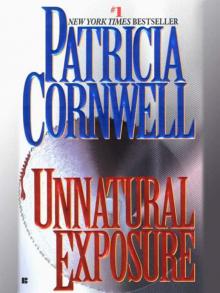 Unnatural Exposure
Unnatural Exposure The Bone Bed
The Bone Bed Book of the Dead
Book of the Dead Flesh and Blood: A Scarpetta Novel (Scarpetta Novels Book 22)
Flesh and Blood: A Scarpetta Novel (Scarpetta Novels Book 22)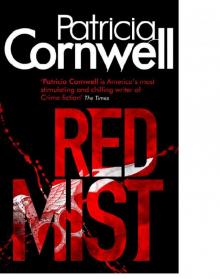 Red Mist
Red Mist Cruel & Unusual
Cruel & Unusual Hornet's Nest
Hornet's Nest Four Scarpetta Novels
Four Scarpetta Novels Scarpetta's Winter Table
Scarpetta's Winter Table Isle of Dogs
Isle of Dogs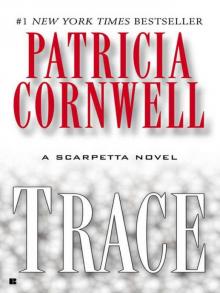 Trace
Trace Postmortem
Postmortem Body of Evidence ks-2
Body of Evidence ks-2 Southern Cross
Southern Cross All That Remains
All That Remains Point of Origin
Point of Origin Depraved Heart
Depraved Heart Ruth, a Portrait: The Story of Ruth Bell Graham
Ruth, a Portrait: The Story of Ruth Bell Graham From Potter's Field
From Potter's Field Flesh and Blood
Flesh and Blood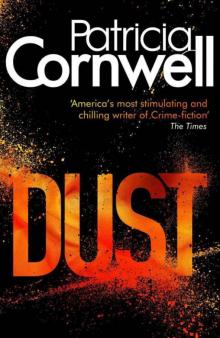 Dust
Dust The Body Farm
The Body Farm Port Mortuary
Port Mortuary Quantum
Quantum Portrait of a Killer: Jack the Ripper - Case Closed
Portrait of a Killer: Jack the Ripper - Case Closed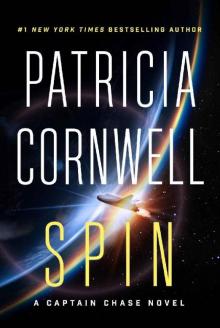 Spin (Captain Chase)
Spin (Captain Chase)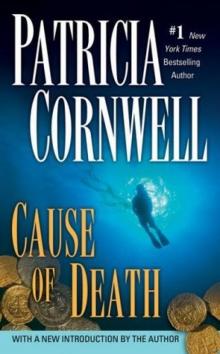 Cause of Death
Cause of Death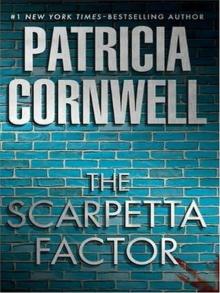 The Scarpetta Factor
The Scarpetta Factor Predator
Predator Scarpetta 18 - Port Mortuary
Scarpetta 18 - Port Mortuary Trace ks-13
Trace ks-13 Portrait of a Killer
Portrait of a Killer Cruel and Unusual ks-4
Cruel and Unusual ks-4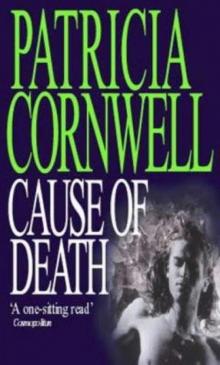 Cause Of Death ks-7
Cause Of Death ks-7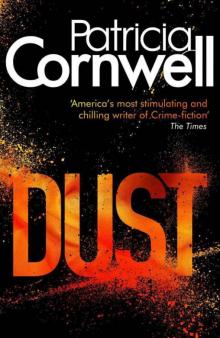 Dust ks-21
Dust ks-21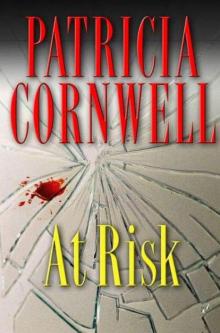 At Risk wg-1
At Risk wg-1 The Last Precinct ks-11
The Last Precinct ks-11 Book of the Dead ks-15
Book of the Dead ks-15 All That Remains ks-3
All That Remains ks-3 Ruth, a Portrait
Ruth, a Portrait Scarpetta's Winter Table (kay scarpetta)
Scarpetta's Winter Table (kay scarpetta) From Potter's Field ks-6
From Potter's Field ks-6 Scarpetta
Scarpetta Isle of Dogs jhabavw-3
Isle of Dogs jhabavw-3 Hornet's Nest jhabavw-1
Hornet's Nest jhabavw-1 The Body Farm ks-5
The Body Farm ks-5 Blow Fly ks-12
Blow Fly ks-12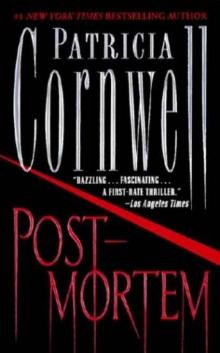 Post Mortem
Post Mortem Five Scarpetta Novels
Five Scarpetta Novels Chasing the Ripper (Kindle Single)
Chasing the Ripper (Kindle Single) Point of Origin ks-9
Point of Origin ks-9 Port Mortuary (2010)
Port Mortuary (2010) Unnatural Exposure ks-8
Unnatural Exposure ks-8 Southern Cross uhabavw-2
Southern Cross uhabavw-2 The Bone Bed ks-20
The Bone Bed ks-20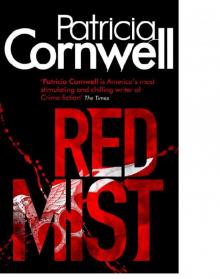 Red Mist ks-19
Red Mist ks-19 Port Mortuary (2010) ks-18
Port Mortuary (2010) ks-18 Predator ks-14
Predator ks-14